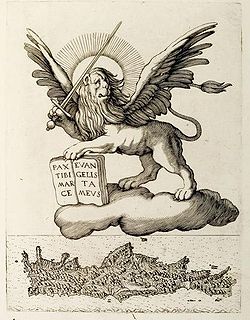
Back مملكة كانديا Arabic مملكة كانديا ARZ Kandiya krallığı Azerbaijani Херцогство Кандия Bulgarian Regne de Càndia Catalan Království Kandia Czech Ενετοκρατία στην Κρήτη Greek Reĝlando Kandia Esperanto Reino de Candía Spanish Candia kuningriik Estonian
Kingdom of Candia | |||||||||
|---|---|---|---|---|---|---|---|---|---|
| 1205–1667 | |||||||||
 The Lion of Saint Mark, symbol of the Republic of Venice, standing guard over a map of Crete | |||||||||
| Status | Colony of the Republic of Venice | ||||||||
| Capital | Candia | ||||||||
| Common languages | |||||||||
| Religion | Roman Catholicism | ||||||||
| Government | Venetian Colonial Government | ||||||||
| Duke of Crete | |||||||||
• 1209–1214 | Giacomo Tiepolo (first) | ||||||||
• 1667 | Girolamo Battagia (last) | ||||||||
| Historical era | Late Middle Ages and Renaissance | ||||||||
| 1204 | |||||||||
• Cession to Venice | 1205 | ||||||||
| 1363–1368 | |||||||||
1571 | |||||||||
| 1667 | |||||||||
• Ottoman conquest of offshore Cretan isles | 1715 | ||||||||
| Currency | Venetian coinage | ||||||||
| |||||||||
| Today part of | |||||||||
The Realm or Kingdom of Candia (Venetian: Regno de Càndia; Italian: Regno di Candia) or Duchy of Candia (Venetian: Dogado de Càndia; Italian: Ducato di Candia) was the official name of Crete during the island's period as an overseas colony of the Republic of Venice, from the initial Venetian conquest in 1205–1212 to its fall to the Ottoman Empire during the Cretan War (1645–1669). The island was at the time and up to the early modern era commonly known as Candia after its capital, Candia or Chandax (modern Heraklion). In modern Greek historiography, the period is known as the Venetocracy (Greek: Βενετοκρατία, romanized: Venetokratía, or Ενετοκρατία, Enetokratía).
The island of Crete had formed part of the Byzantine Empire until 1204, when the Fourth Crusade dissolved the empire and divided its territories amongst the crusader leaders (see Frankokratia). Crete was initially allotted to Boniface of Montferrat, but, unable to enforce his control over the island, he soon sold his rights to Venice. Venetian troops first occupied the island in 1205, but it took until 1212 for it to be secured, especially against the opposition of Venice's rival Genoa. Thereafter, the new colony took shape: the island was divided into six provinces (sestieri) named after the divisions of the city of Venice itself, while the capital Candia was directly subjected to the Commune Veneciarum. The islands of Tinos and Cythera, also under Venetian control, came under the kingdom's purview. In the early 14th century, this division was replaced by four provinces, almost identical to the four modern prefectures.
During the first two centuries of Venetian rule, revolts by the native Orthodox Greek population against the Roman Catholic Venetians were frequent, often supported by the Empire of Nicaea. Fourteen revolts are counted between 1207 and the last major uprising, the Revolt of St. Titus in the 1360s, which united the Greeks and the Venetian coloni against the financial exactions of the metropolis. Thereafter, and despite occasional revolts and Turkish raids, the island largely prospered, and Venetian rule opened up a window into the ongoing Italian Renaissance. As a consequence, an artistic and literary revival unparalleled elsewhere in the Greek world took place: the Cretan School of painting, which culminated in the works of El Greco, united Italian and Byzantine forms, and a widespread literature using the local idiom emerged, culminating with the early 17th-century romances Erotokritos and Erophile.
After the Ottoman conquest of Cyprus in 1571, Crete was Venice's last major overseas possession. The Republic's relative military weakness, coupled with the island's wealth and its strategic location controlling the waterways of the Eastern Mediterranean attracted the attention of the Ottoman Empire. In the long and devastating Cretan War (1645–1669), the two states fought over the possession of Crete: the Ottomans quickly overran most of the island, but failed to take Candia, which held out, aided by Venetian naval superiority and Ottoman distractions elsewhere, until 1669. Only the three island fortresses of Souda, Gramvousa and Spinalonga remained in Venetian hands. Attempts to recover Candia during the Morean War failed, and these last Venetian outposts were finally taken by the Turks in 1715, during the last Ottoman–Venetian War.

